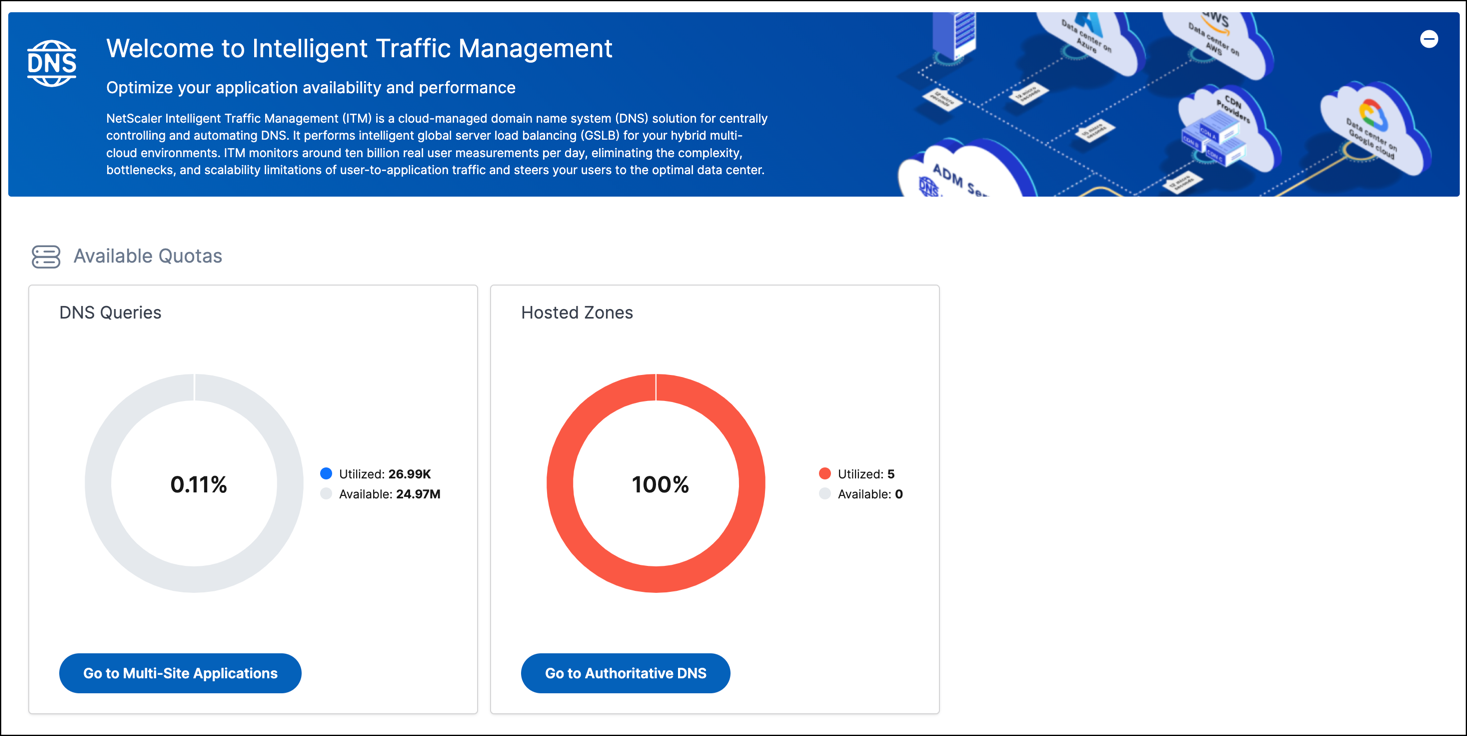-
Low-touch onboarding of NetScaler instances using Console Advisory Connect
-
Intelligent Traffic Management
This content has been machine translated dynamically.
Dieser Inhalt ist eine maschinelle Übersetzung, die dynamisch erstellt wurde. (Haftungsausschluss)
Cet article a été traduit automatiquement de manière dynamique. (Clause de non responsabilité)
Este artículo lo ha traducido una máquina de forma dinámica. (Aviso legal)
此内容已经过机器动态翻译。 放弃
このコンテンツは動的に機械翻訳されています。免責事項
이 콘텐츠는 동적으로 기계 번역되었습니다. 책임 부인
Este texto foi traduzido automaticamente. (Aviso legal)
Questo contenuto è stato tradotto dinamicamente con traduzione automatica.(Esclusione di responsabilità))
This article has been machine translated.
Dieser Artikel wurde maschinell übersetzt. (Haftungsausschluss)
Ce article a été traduit automatiquement. (Clause de non responsabilité)
Este artículo ha sido traducido automáticamente. (Aviso legal)
この記事は機械翻訳されています.免責事項
이 기사는 기계 번역되었습니다.책임 부인
Este artigo foi traduzido automaticamente.(Aviso legal)
这篇文章已经过机器翻译.放弃
Questo articolo è stato tradotto automaticamente.(Esclusione di responsabilità))
Translation failed!
Intelligent Traffic Management
Intelligent Traffic Management helps you enhance the user experience by analyzing the internet traffic in real time and automatically steering your traffic to the optimal locations.
Intelligent Traffic Management gathers real user monitoring data from clients as they access applications across clouds, data centers, and CDNs, and builds a holistic picture of internet health. It monitors connections across the internet and can adapt where it sends your user requests to ensure that your content is always available. Intelligent Traffic Management also collates data about the performance of each cloud provider so you can choose which is the best for your needs and migrate as appropriate.
Intelligent traffic management enables you to:
-
Deliver applications in multiple locations to increase availability and reduce application response time. With the intelligent traffic management having near real-time internet visibility, the internet is no longer a blind spot. Traffic is directed to locations with the maximum availability and the lowest latency to ensure an optimal user experience. Based on the traffic insights, the service also recommends the best sites for hosting your applications.
-
Configure the authoritative DNS that manages your zones and makes routing decisions based on real-time service availability.
-
View insights into the customer data centers or delivery platforms and applications. Internet visibility feature provides you information such as availability, response time, and throughput measurements from every network across the globe and application specific metrics such as page load time, page render time. Radar forms the backbone of the data collection methodology.
The DNS Queries and Hosted Zones charts available on the Intelligent Traffic Management page show the current available DNS query and hosted zone count in comparison with the allocated quotas.

Share
Share
In this article
This Preview product documentation is Cloud Software Group Confidential.
You agree to hold this documentation confidential pursuant to the terms of your Cloud Software Group Beta/Tech Preview Agreement.
The development, release and timing of any features or functionality described in the Preview documentation remains at our sole discretion and are subject to change without notice or consultation.
The documentation is for informational purposes only and is not a commitment, promise or legal obligation to deliver any material, code or functionality and should not be relied upon in making Cloud Software Group product purchase decisions.
If you do not agree, select I DO NOT AGREE to exit.